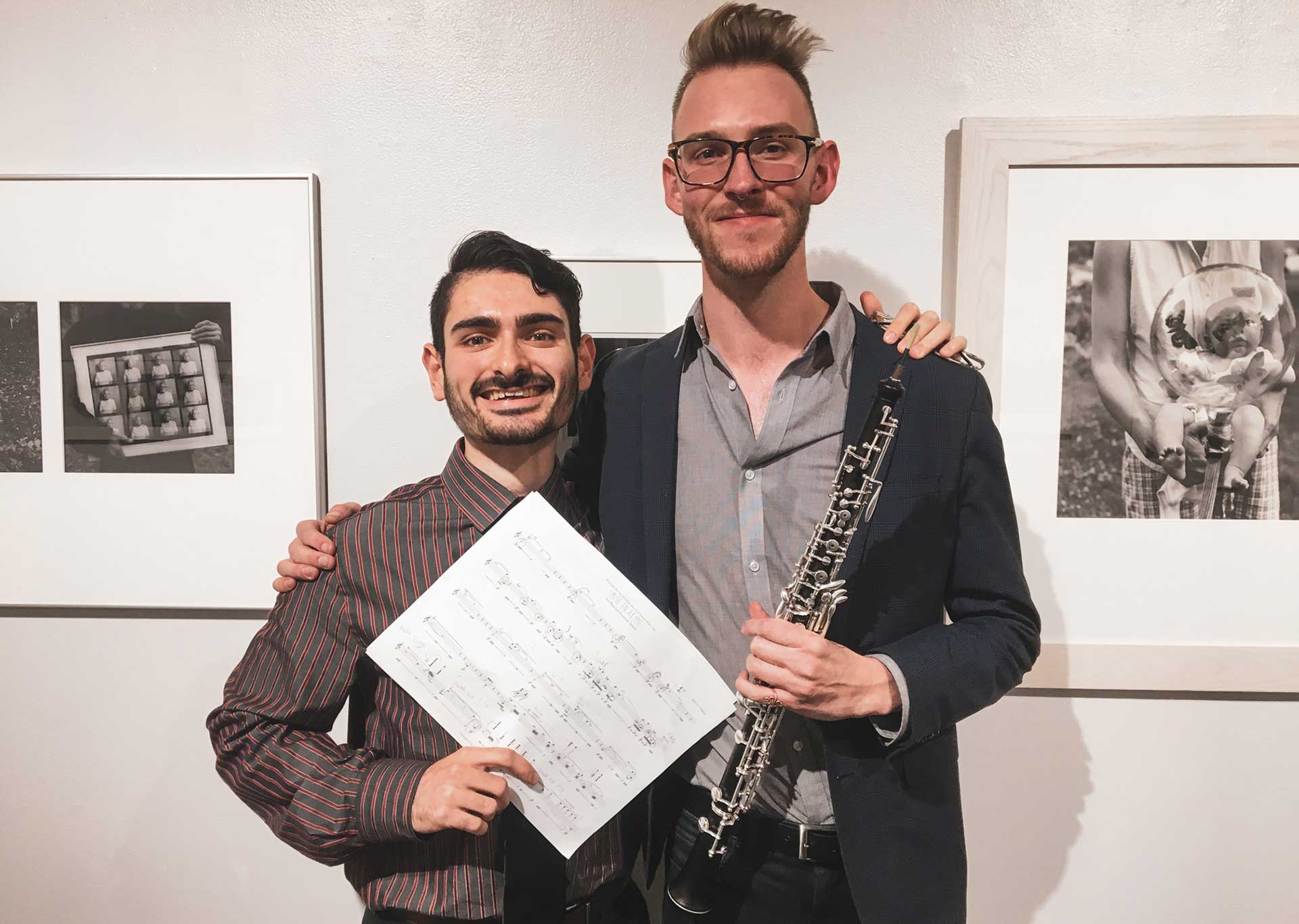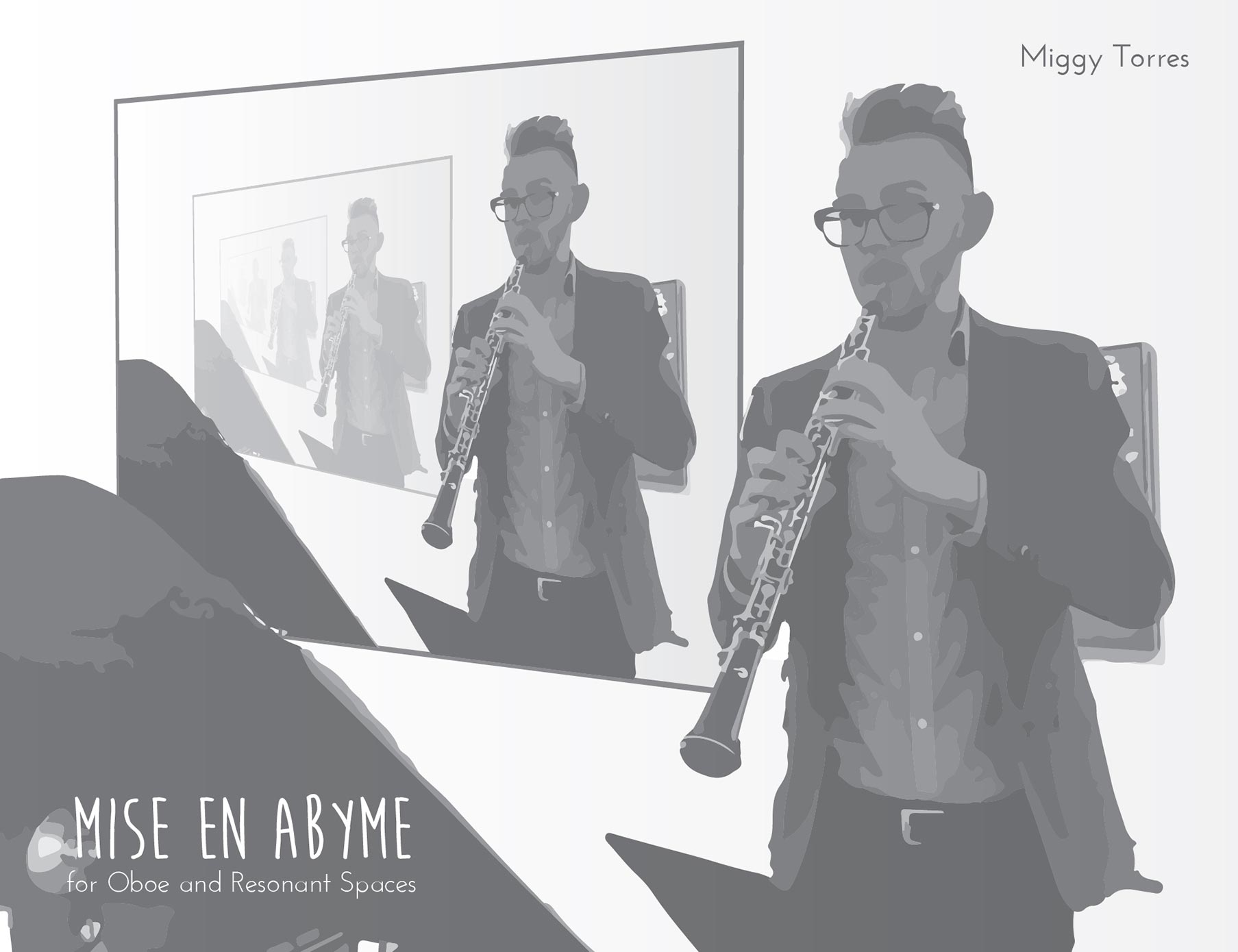

Composer's Note
Mise En Abyme for Oboe and Resonant Spaces is based on the exhibit A Shared Elegy that appeared October 13 to November 16, 2017 in the Grunwald Gallery at Indiana University and the gallery space as a whole.
Upon viewing the exhibit for the first time, it immediately struck me how many of the photographs in the gallery were reflectant, images in which light and the way it reflects is not only the vehicle for transmission of the subject, but is also the subject itself. In many of the works light seems to fly out at you. There were also several photographs of other photographs, or in which other photographs appear. The space in the Grunwald Gallery is also highly reflective with its polished floors and acoustically reverberant walls.
All of these together made me think of the “mise en abyme” phenomenon: when you see a picture within a picture of itself, within a picture of itself, etc. or when you look at your reflection while standing between two mirrors. This is all especially striking when contrasted with the Kinship exhibition across the foyer that includes many pictures of fabric and cloth—an acoustically absorptive material.
Throughout the piece, not only are the oboe's sharp attacks acoustically reflected by the Grunwald Gallery—as though the space itself is in echolalic dialogue with the instrument—but musical material within the oboe part is reflected through time. Gestures are presented in a certain order that is then reversed again and again. With each reversal comes another layer of abstraction.
Much like infinite space is recursively compressed into the finite boundaries of two mirrors, the medium of time in Mise En Abyme is infinitesimally compressed until the oboe releases a multiphonic—a technique in which the player is able to produce many notes at once—such that one is hearing simultaneously pitches that would normally occur sequentially.
In addition to being space-dependent, Mise En Abyme is also observer-dependent. The reverberance of the gallery changes based on the number of people in the room and their clothing, which dampens sound. In this way, the audience itself participates—passively but inexorably—in the creation of the resultant sound.
Cheers.





